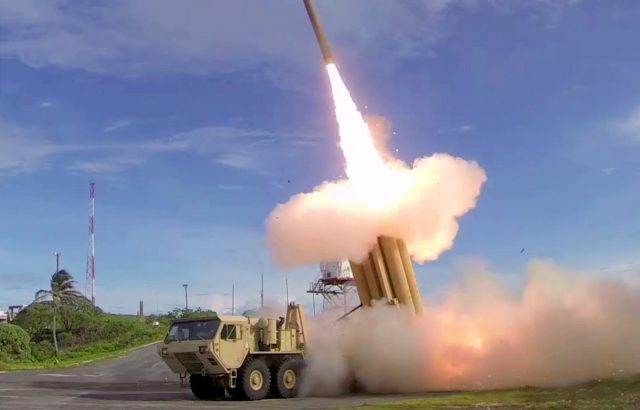By Dr Zafar Nawaz Jaspal
Since the announcement of the 2018 Nuclear Posture Review of the United States, Chinese and Russians have shown enthusiasm for the development of missile shield. The Americans have already been investing gigantically in the perfection of its missile defence program. Indeed, the development and operationalization of a reliable missile defence could pose a serious challenge to the effectiveness of the offensive ballistic missiles and also undermine the deterrence stability between/among the strategic competitors.
Recently, Moscow and Beijing demonstrated the strength of their home-grown missile defence technologies. The former conducted the test of a new Russian ballistic missile interceptor on February 12, 2018. The general impression is that it is an upgrade of the Soviet-era A-135 missile defence system. On February 5, 2018, China carried out a land-based mid-course missile interception test.
It involved a Dong Neng-3 (DN-3/KO09) hit-to-kill midcourse interceptor successfully striking a target DF-21 (CSS-5) medium-range ballistic missile. According to reports, Chinese conducted three midcourse interceptor tests. This interceptor is designed to destroy a ballistic missile travelling in space before it re-enters the atmosphere.
The DN-3 could be commissioned for the purpose of an anti-satellite (ASAT) platform to destroy or blind adversary’s spy satellites. The United States has been trying to develop and operationalize its Ballistic Missile Defence system since the mid-1990s.
Therefore, Washington withdrew from 1972 anti-ballistic missile Treaty in June 2002. The American scientific community has been concentrating on the development of multi-tiered ballistic missile defences (land, sea, air, with space as the fourth tier, also described as the ‘fourth medium of warfare’).
The Rumsfeld Space Commission ascribed orbital weapons significant importance that would provide the US with an extraordinary advantage in military conflicts. “A product of Rumsfeld’s militaristic vision of space, the X-37B Unmanned Space Vehicle (USV) that has been in orbit since April 2010 may serve as a test-bed for space-based weapon technologies.”
Nuclear Posture Review 2018 also revealed “the United States will develop a future architecture which will include modernized SBIRS (Space Based Infrared System) satellites and integrate missile defence sensors to maximize warning time.”
The United States successfully tested the Ground-based Midcourse Defence (GMD) system in Alaska on May 30, 2016. It was a first-of-its-kind test. It was like hitting a bullet with another bullet. Vice Admiral Jim Syring, director of the US Missile Defence Agency stated:
“This system is vitally important to the defence of our homeland, and this test demonstrates that we have a capable, credible deterrent against a very real threat.” The GMD system uses globally deployed sensors to detect and track offensive intercontinental ballistic missile. Thus, it is designed to protect the entire United States from Intercontinental Ballistic Missile attacks.
The missile defence systems development is a complicated and difficult venture. Therefore, today, only United States, Russia and China are in possession of missile defence systems. Despite the technological impediments, New Delhi has been developing its own missile shield. India’s Defence Research and Development Organization announced that it was working on ways to protect the country against missiles that have a range of up to 5,000 kilometres.
India may purchase modern early-warning radars needed to guide interceptors from Israel. The nurturing of the Indian missile defence system is alarming for the strategic stability in South Asia because it intensifies arms race between India and Pakistan. Although, the development of missile defence systems is defensive in nature, yet it dents the credibility of the offensive missiles. It destabilizes the deterrence stability, which is based on the threat of retaliation. Thus, the missile shield would unleash lethal arms race. It is because arsenal designed for deterrence must be able to survive an enemy first strike and still inflict unacceptable damage on the attacker.
The missile defence systems development obliges the security conscious nations to introduce more sophisticated striking weapons. The missile defence systems dent the credibility of the counterstrike capability of a deterring state. Therefore, the states need to improve their retaliatory arsenals just to maintain the same level of deterrence. They would manufacture more sophisticated multiple striking weapons such as independently targetable re-entry vehicles (MIRV), advance cruise missiles, laser weapons to hit satellites, etc. to enhance the credibility of counterstrike capability. To conclude, the missile defence systems necessitate modernization and expanding of offensive forces for the sustainability of deterrence stability.
The writer is Associate Professor, School of Politics and International Relations, Quaid-i-Azam University, Islamabad.







